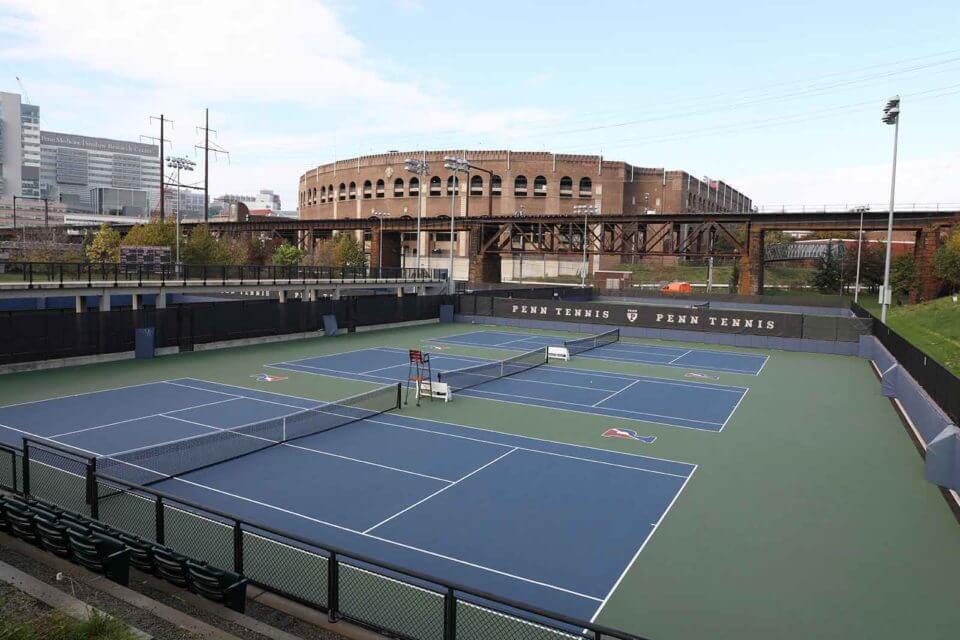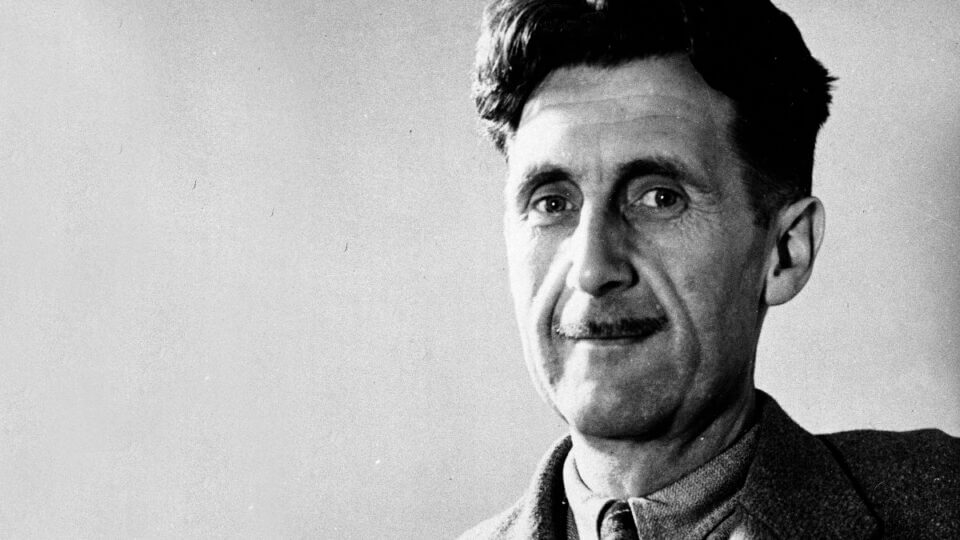
“Should American tennis enthusiasts be deprived the opportunity of receiving a financial scholarship and the college athletic experience because coaches—and an increasing number of them from overseas—believe foreign players are their best chance to win matches?”
Although some stalwart supporters decry assessments that American tennis is at death’s door, it cannot be denied that our once vaunted racket prowess is in steep decline. Longtime and thoughtful connoisseurs of the game have sobering explanations for this troubling athletic collapse. One increasingly common refrain is that the sport has been outsourced—hallowed out from within, leaving junior players disillusioned and adrift, while the collegiate ranks are increasingly dominated by foreign players.
The moribund state of American tennis can be easily documented by a host of disturbing signposts. Most apparent to the casual fan is that there is not one American among the world’s top 20 players on the professional men’s tour. Even more discouraging, an American man has not won a title at one of the four major tennis tournaments (Wimbledon, Roland Garros, Australian, and U. S. Open) since 2003. That 17-year gap is the longest period of ineptitude since American men first picked up a heavy wooden racket and cloth-covered tennis ball in the 1870’s. And, unfortunately, the trend seems likely to continue for a good while longer.
One close observer of the game claims much of the decline has to do with spots on American college teams being farmed out to players from Europe, Africa, South America, and Asia. “I’ve been fighting against the foreign player glut in American college tennis for the past 20-years,” admits Wayne Bryan, “but have been spectacularly unsuccessful in reducing the size of this giant elephant” in our midst. A former player and coach as well as the father of the accomplished Bryan brothers (Bob and Mike) doubles team, he goes on to forcefully argue it’s okay for “professional tennis to be international, but college and high school tennis should be for our American kids.”
Incredibly, the city of Belgrade, Serbia can claim more players on the team than New York City.
Even a cursory survey of college tennis rosters during this virus-interrupted sports season will illuminate the reasons for Bryan’s ire. The two Americans on Fordham University’s 2019/20 mens team, for instance, are a distinct minority in a sea of players from Belgium, Germany, Singapore, Canada, and Sweden. Across the East River in Queens, things are arguably worse. The St. John’s men’s team has players representing India, Italy, Australia, and France. Incredibly, the city of Belgrade, Serbia can claim more players on the team than New York City.
The women’s game at the collegiate level is equally dominated by foreigners. At Seton Hall University, for example, six of the seven players come from Morocco, Serbia, New Zealand, Spain, and two from the Netherlands. Even worse, all eight players on Long Island University’s 2019/20 tennis roster are from overseas, with players representing Australia, Moldova, Germany, Czech Republic, Russia, Norway, United Kingdom, and Tbilisi, Georgia.
This foreign invasion is not peculiar to the New York City area; it’s national in scope and growing worse by the year. No reasonable person will argue that diversity is not a good thing or exposure to foreign students is not beneficial, but does one sport have to carry the full weight of the trans-cultural experience? Should American tennis enthusiasts be deprived the opportunity of receiving a financial scholarship and the college athletic experience because coaches—and an increasing number of them from overseas—believe foreign players are their best chance to win matches?
Students from abroad have long been coming to the United States for their academic and athletic advancement. The first overseas racket-wielder on an American college campus was a Japanese student, Aiske Kabayama, who played on Wesleyan’s 1885 tennis squad. Numbers remained low through the first half of the 20th century, but from World War II on, foreign players on American college tennis teams grew more common. Some even became champions. Francisco “Pancho” Segura, for example, a native of Ecuador and student at the University of Miami, won the national collegiate title three years in a row during the mid-1940’s. A decade later, Alex Olmedo from Peru, won the college tennis crown in 1957 and 1958, while a student at University of Southern California. College champions from overseas at the time were more the oddity than the rule, but today a foreign student is as likely to win the NCAA singles title as an American. In fact, since 2000, foreign players have won half the mens singles titles.
According to tennis historian, Richard Hillway, the uptick in foreign players on American campuses occurred in the 1970’s. What sparked the increase? Hillway says it was a combination of “the availability of more scholarship money, the desire of college coaches to beat the top American teams like Stanford, and the fact that European players were considered harder workers and easier to coach.”
But the windfall of opportunity for good foreign players has proven decidedly detrimental to our homegrown talent. “A whole team of foreigners,” says Hillway, “hurts American players. The kids getting kicked-off these college squads are Americans. However, if these so called lesser players had the chance to develop they might improve and become more accomplished during their college years and beyond.”
Gary Cimperman, head pro at the Cynwyd Tennis Club in Bala Cynwyd, Pennsylvania spends much of his day teaching the game to youth and shares their frustration. “American kids with ability and a dream are funneled out of the race,” says Cimperman. “Many college coaches today believe players from Europe and South America learn the game on slow clay courts and therefore have better technique, develop match toughness earlier, and are just better players.”
The message for many domestic aspirants: Americans need not apply for the eight women’s and 4 1/2 men’s scholarships that university tennis teams are allowed to offer.
Coaches of college squads that don’t offer tennis scholarships know the outcome of an unlevel playing field. “The kids knew that when we played a school that gave out tennis scholarships and had a large contingent of foreigners, they were going to lose,” says former La Salle University player and coach, Ed Colfer Jr. “Our number one kid was not happy as he knew he was going to be outclassed and probably beaten badly.”
Colfer returned to coach at his alma mater in 2002 and over the years witnessed the dramatic rise of foreign talent on American college teams. “Back when I started coaching at La Salle, schools like Temple and Drexel had either no foreign players or one or two at the most,” Colfer recalls, “but year by year the number of foreigners increased. My last year as a coach in 2013 was ridiculous. The majority of players were foreign, usually older, and some had already played on a low level pro circuit. We got killed, all the foreigners destroyed us.”
Temple University’s tennis team this past season consisted of seventeen men and women players. Fifteen of them were from countries ranging from Turkey, China, Russia, France, and beyond. Drexel University’s team was nearly as international, with 13 of 17 players from overseas. The message for many domestic aspirants: Americans need not apply for the eight women’s and 4 1/2 men’s scholarships that university tennis teams are allowed to offer.
Incredibly, the problem has metastasized to the point that many Historically black colleges and universities (HBCU) schools now have tennis teams without an American— black or white—on the squad. For example, Morgan State, Florida A&M, and Bethune-Cookman, which are all historically black colleges, have tennis teams that are entirely foreign in composition.
For Art Carrington, an African-American from Elizabeth, New Jersey who now coaches in Massachusetts, the stark shift to foreign players is nothing short of shocking. “It blows my mind,” says the Hampton University graduate. “I don’t know what has happened? The HBCU schools have abandoned their mission. They helped educate three generations of my family, but I’ve now stopped dealing with them. They’ve cast aside the mission of historically black schools just to get better players. It’s terrible.”
The dilemma has not been lost on parents who have invested years and a good bit of money on their children’s dreams of playing tennis at a top American university. Keith Bunn, an African-American from Philadelphia with two precocious teenagers who have devoted countless hours to honing their tennis game, is miffed about both the college tennis scene, and the “disappointment” that comes with “HBCU schools doing what everyone else is doing.”
“No one is complaining about it or raising a stink about it,” says Bunn, “but they need to. HBCU schools should maintain their commitment to the mission. And on a broader scale, the USTA and the NCAA dropped the ball” on the number of foreigners playing college tennis. “The problem needs to be corrected.”
But the issue seems not to have appeared on either organization’s radar screen. Thomas Paine was no tennis enthusiast, but he soberly observed of such willful blindness, “A long habit of not thinking a thing wrong, gives it a superficial appearance of being right…”
To their credit, a few discerning tennis fans have taken notice. “There is always talk and rumblings, but no prominent names have embraced the campaign,” observes Julio Godreau, a director of junior tennis in Texas. “The NCAA is not interested. College tennis is not a profit maker like football and basketball, it’s so far down their list of concerns.” But Godreau goes on to point out that considerable money is involved. For a kid with a half or full scholarship for four years, the money adds up. That is especially so when multiplied by the ten to twenty players on a team, and the many college teams throughout the country. Millions of dollars are involved.
One can only imagine what the average American taxpayer would think upon learning his hard earned tax dollars are going to foster the education of tennis players from China, Turkey, Moldova, and the Ukraine, while American kids go without? They’re not likely to take kindly to a backdoor foreign aid program they were never told about. But until the NCAA takes notice or state lawmakers show some initiative and pass legislation to limit the number of foreign players on college teams receiving state funding, it may depend on the coaches and school administrators to establish some athletic and financial guard rails that protect the interests of young Americans.
“Our country ought to take care of its own,” argues Allen Fox, a former national collegiate champion and highly successful tennis coach at Pepperdine. “Sure, a coach’s objective is to win tennis matches. A coach can get fired for a poor record, so he wants to be competitive and get the best players he can. Such coaches are voting self-interest when they go after the best kids from overseas. But from a national standpoint,” Fox asks, “why not take care of our own for a while? If a coach is really patriotic he’ll save scholarships for American kids. It’s typical of our country. We’re stupid that way, we give all these scholarships to foreigners.”
Pessimists would argue the problem has festered too long, a new culture of winning with foreign players has been established, and the game for American kids has been lost. But others counter that if we can combat an insidious and deadly virus, we can successfully change the course of college tennis in America. If that patriotic spirit proves illusory, however, we can expect college soccer to go the same way as tennis—a game we used to play.
Allen M. Hornblum is a tennis player and the author of American Colossus: Big Bill Tilden and the Creation of Modern Tennis. He is also the author of several other books, most notably Acres of Skin (1998) and has taught in the Department of Geography and Urban Studies at Temple University.












The author of this piece is on the money. There is no reason American tax dollars should be subsidizing these foreign students, when the state of college education is what it is already in our country
Congress needs to do something about this…stop selling out American kids
This Hornblum is good..hope to see more of him
Maybe the USA should work on how to get it’s young kids and teens and college-age kids to actually play tennis. Tennis is difficult to learn, expensive, and isolating (no teams). It’s a mostly white sport. Not enough k-12 schools offer it. Even kids who play young often let tennis drop after high school, if not before. The USTA should ask, “Why?” Simple exercise: make a pros and cons list about playing tennis. Pros – What’s great about playing tennis? Cons – What makes getting into and staying into playng tennis difficult? Now, come up with innovative ways to overcome the cons. Why do kids play baseball, soccer, basketball, football, even join swim “teams?” THERE IT IS — TEAMS! How can we invent team tennis for kids (and for everyone)? Is Love-15-30-40-Game the only way to play? Just singles and doubles? How about rotations? How about alternative scoring? How about shorter sets and shorter matches? How about active coaching? How about substitutions (yes, situational substitutions, like football, baseball, basketball, hockey)? How do we make tennis more social for all ages? How do we show it’s a life-long sport? How do we make it more accessible for everyone at all socio-economic levels? How to we get kids playing it on playgrounds and during PE at schools? The decline of tennis in the USA, if that is a thing, is not caused by out-sourcing the game, it’s about our own failure to in-source it. What re some other outside-the=box ideas to get and keep more young players and athletes playing tennis?
The Love of money is the root of all evil….until college coaches can still keep their jobs and continue to keep making the money their used too greed and the love of money will always win in the end .
asking a state representative to push a fair, balanced, rational, policy on sports scholarships is asking a lot. If, one ties it to their automatic annual pay increase , then maybe a state representative would consider it.